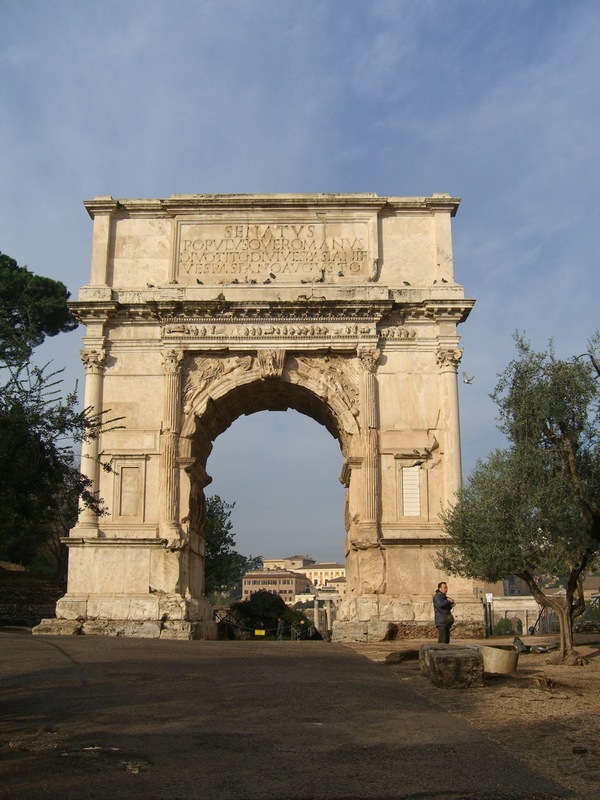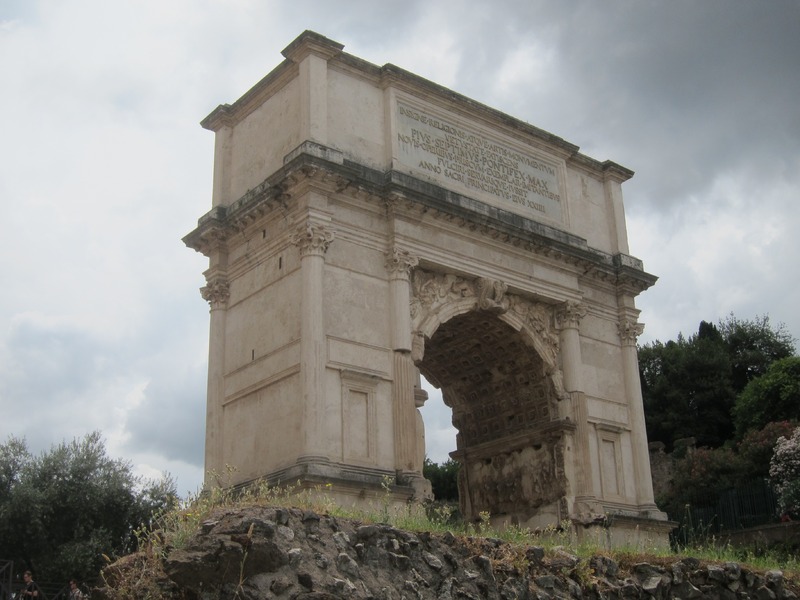19th Century

The Arch for Titus, view of the reconstructed ancient inner third and travertine outer sections

The Arch for Titus, detail of Pius VII's new inscription
The Arch for Titus was in a precarious state in 1811, when Napoleon decreed a budget of hundreds of thousands of francs for the restoration of classical sites in Rome, and Pope Pius VII was beginning to make restoration a priority. At the turn of the century, the arch was covered with medieval brickwork on top, supported with a sloping buttress on one side, and integrated into the wall of a medieval building on the other.1 Partial removal of these supports in 1810 left the arch extremely vulnerable.
Competing restoration plans proposed either building brick buttresses on each side or dismantling and rebuilding the arch—a radical proposal at the time. Between 1818 and 1824, architects finally executed the second approach, erecting scaffolding and dismantling unsafe pieces before rebuilding and adding missing side sections. Italian architect Raffaele Stern’s thoughtful restoration plan used travertine (a type of limestone) for side and attic supports, creating a clear distinction between added stone and the original marble.2
Pope Pius VII also left his mark on the arch: a new inscription proclaimed that the pope was ultimately to thank for the refurbishment.
________
1. Ronald T. Ridley, The Eagle and the Spade (Cambridge: Cambridge University Press, 1992), 96-99.
2. Ridley, The Eagle and the Spade, 241.